Deep Learning Model-Based Architectures for Lung Tumor Mutation Profiling: A Systematic Review
Simple Summary
Abstract
1. Introduction
2. Materials and Methods
2.1. Eligibility Criteria
2.2. Exclusion Criteria
2.3. Bias Assesment
2.4. Information Sources
2.5. Search Strategy
2.6. Selection Process
2.7. Data Items
2.8. Data Collection Process
3. Results
3.1. Size of Population Used
3.2. Origin of the Own Samples
3.3. Color and Other Normalization
3.4. Data Augmentation
3.5. Image Magnification Used
3.6. Expertise Pathologist
3.7. Deep Learning Architectures: Supervised vs. Hybrid Approaches
3.8. Architectures Used for Classification and Mutational Profiling
3.9. Gene Analyzed
3.10. Cross-Validation or External Data Used for Model Validation
3.11. Explainability of the Classification and Mutational Profiling Model
3.12. Open Data and Code
3.13. Other Relevant Information
4. Discussion
5. Conclusions
Supplementary Materials
Author Contributions
Funding
Data Availability Statement
Acknowledgments
Conflicts of Interest
Abbreviations
| AI | Artificial Intelligence |
| AUC | Area Under the roc Curve |
| CAM | Class Activation Mapping |
| CNNs | Convolutional Neural Networks |
| DL | Deep Learning |
| FISH | Fluorescence In Situ Hybridization |
| Grad-CAM | GRADient-weighted Class Activation Mapping |
| GS-PCA | Graph-Based Sparse Principal Component Analysis |
| H&E | Hematoxylin and Eosin |
| ICI | Immune Checkpoint Inhibitor |
| IHC | ImmunoHistoChemistry |
| Indels | INsertions or DELetions |
| KPI | Key Performance Indicator |
| LIME | Local Interpretable Model-agnostic Explanations |
| MNVs | Multiple Nucleotide Variants |
| NGS | Next-Generation Sequencing |
| NSCLC | Non-Small-Cell Lung Cancer |
| PRISMA | Preferred Reporting Items for Systematic Reviews and Meta-Analyses |
| SCLC | Small-Cell Lung Cancer |
| SHAP | SHapley Additive exPlanations |
| SNVs | Single Nucleotide Variants |
| TC | Tumor Cellularity |
| TIL | Tumor-Infiltrating Lymphocyte |
| TMB | Tumor Mutational Burden |
| WOS | Web of Science |
| WSI | Whole Slide Imaging |
| XAI | eXplainable Artificial Intelligence |
References
- ACS. Cancer Stat Facts: Lung and Bronchus Cancer. Available online: https://seer.cancer.gov/statfacts/html/lungb.html (accessed on 4 October 2025).
- Carrillo-Perez, F.; Morales, J.C.; Castillo-Secilla, D.; Molina-Castro, Y.; Guillén, A.; Rojas, I.; Herrera, L.J. Non-small-cell lung cancer classification via RNA-Seq and histology imaging probability fusion. BMC Bioinform. 2021, 22, 454. [Google Scholar] [CrossRef]
- Rudin, C.M.; Brambilla, E.; Faivre-Finn, C.; Sage, J. Small-cell lung cancer. Nat. Rev. Dis. Prim. 2021, 7, 3. [Google Scholar] [CrossRef] [PubMed]
- Zappa, C.; Mousa, S.A. Non-small cell lung cancer: Current treatment and future advances. Transl. Lung Cancer Res. 2016, 5, 288. [Google Scholar] [CrossRef] [PubMed]
- Travis, W.D.; Brambilla, E.; Noguchi, M.; Nicholson, A.G.; Geisinger, K.; Yatabe, Y.; Ishikawa, Y.; Wistuba, I.; Flieder, D.B.; Franklin, W.; et al. Diagnosis of lung cancer in small biopsies and cytology: Implications of the 2011 International Association for the Study of Lung Cancer/American Thoracic Society/European Respiratory Society classification. Arch. Pathol. Lab. Med. 2013, 137, 668–684. [Google Scholar] [CrossRef]
- Raso, M.G.; Bota-Rabassedas, N.; Wistuba, I.I. Pathology and classification of SCLC. Cancers 2021, 13, 820. [Google Scholar] [CrossRef]
- Moch, H.; Travis, W.D.; Brambilla, E.; Nicholson, A.G.; Sekine, Y.; Yatabe, Y.; Marx, A.; Higuchi, M.; Ullmann, T.M.; Marchevsky, A. Thoracic tumours. In WHO Classification of Tumours; WHO: Geneva, Switzerland, 2021; Volume 5. [Google Scholar]
- Thandra, K.C.; Barsouk, A.; Saginala, K.; Aluru, J.S.; Barsouk, A. Epidemiology of lung cancer. Contemp. Oncol. 2021, 25, 45–52. [Google Scholar] [CrossRef]
- Isla, D.; Lozano, M.D.; Paz-Ares, L.; Salas, C.; de Castro, J.; Conde, E.; Felip, E.; Gómez-Román, J.; Garrido, P.; Enguita, A.B. New update to the guidelines on testing predictive biomarkers in non-small-cell lung cancer: A National Consensus of the Spanish Society of Pathology and the Spanish Society of Medical Oncology. Clin. Transl. Oncol. 2023, 25, 1252–1267. [Google Scholar] [CrossRef]
- Hendriks, L.; Kerr, K.; Menis, J.; Mok, T.; Nestle, U.; Passaro, A.; Peters, S.; Planchard, D.; Smit, E.; Solomon, B.; et al. Oncogene-addicted metastatic non-small-cell lung cancer: ESMO Clinical Practice Guideline for diagnosis, treatment and follow-up. Ann. Oncol. 2023, 34, 339–357. [Google Scholar] [CrossRef] [PubMed]
- Mayer, C.; Ofek, E.; Fridrich, D.E.; Molchanov, Y.; Yacobi, R.; Gazy, I.; Hayun, I.; Zalach, J.; Paz-Yaacov, N.; Barshack, I. Direct identification of ALK and ROS1 fusions in non-small cell lung cancer from hematoxylin and eosin-stained slides using deep learning algorithms. Mod. Pathol. 2022, 35, 1882–1887. [Google Scholar] [CrossRef]
- Ahmed, A.A.; Fawi, M.; Brychcy, A.; Abouzid, M.; Witt, M.; Kaczmarek, E. Development and Validation of a Deep Learning Model for Histopathological Slide Analysis in Lung Cancer Diagnosis. Cancers 2024, 16, 1506. [Google Scholar] [CrossRef]
- Coudray, N.; Ocampo, P.S.; Sakellaropoulos, T.; Narula, N.; Snuderl, M.; Fenyö, D.; Moreira, A.L.; Razavian, N.; Tsirigos, A. Classification and mutation prediction from non-small cell lung cancer histopathology images using deep learning. Nat. Med. 2018, 24, 1559–1567. [Google Scholar] [CrossRef] [PubMed]
- Park, J.H.; Lim, J.H.; Kim, S.; Kim, C.H.; Choi, J.S.; Lim, J.H.; Kim, L.; Chang, J.W.; Park, D.; Lee, M.W.; et al. Deep learning-based analysis of EGFR mutation prevalence in lung adenocarcinoma H&E whole slide images. J. Pathol. Clin. Res. 2024, 10, e70004. [Google Scholar] [PubMed]
- Colling, R.; Pitman, H.; Oien, K.; Rajpoot, N.; Macklin, P.; CM-Path AI in Histopathology Working Group; Bachtiar, V.; Booth, R.; Bryant, A.; Bull, J.; et al. Artificial intelligence in digital pathology: A roadmap to routine use in clinical practice. J. Pathol. 2019, 249, 143–150. [Google Scholar] [CrossRef]
- Page, M.J.; McKenzie, J.E.; Bossuyt, P.M.; Boutron, I.; Hoffmann, T.C.; Mulrow, C.D.; Shamseer, L.; Tetzlaff, J.M.; Akl, E.A.; Brennan, S.E.; et al. The PRISMA 2020 statement: An updated guideline for reporting systematic reviews. BMJ 2021, 372, 71. [Google Scholar] [CrossRef]
- Raczkowska, A.; Paśnik, I.; Kukiełka, M.; Nicoś, M.; Budzinska, M.A.; Kucharczyk, T.; Szumiło, J.; Krawczyk, P.; Crosetto, N.; Szczurek, E. Deep learning-based tumor microenvironment segmentation is predictive of tumor mutations and patient survival in non-small-cell lung cancer. BMC Cancer 2022, 22, 1001. [Google Scholar] [CrossRef] [PubMed]
- Chen, P.; Rojas, F.R.; Hu, X.; Serrano, A.; Zhu, B.; Chen, H.; Hong, L.; Bandyoyadhyay, R.; Aminu, M.; Kalhor, N.; et al. Pathomic Features Reveal Immune and Molecular Evolution from Lung Preneoplasia to Invasive Adenocarcinoma. Mod. Pathol. 2023, 36, 100326. [Google Scholar] [CrossRef]
- Ram, S.; Tang, W.; Bell, A.J.; Pal, R.; Spencer, C.; Buschhaus, A.; Hatt, C.R.; Pasca diMagliano, M.; Rehemtulla, A.; Rodríguez, J.J.; et al. Lung cancer lesion detection in histopathology images using graph-based sparse PCA network. Neoplasia 2023, 42, 100911. [Google Scholar] [CrossRef]
- Sadhwani, A.; Chang, H.W.; Behrooz, A.; Brown, T.; Auvigne-Flament, I.; Patel, H.; Findlater, R.; Velez, V.; Tan, F.; Tekiela, K.; et al. Comparative analysis of machine learning approaches to classify tumor mutation burden in lung adenocarcinoma using histopathology images. Sci. Rep. 2021, 11, 16605. [Google Scholar] [CrossRef]
- Gertych, A.; Zurek, N.; Piaseczna, N.; Szkaradnik, K.; Cui, Y.; Zhang, Y.; Nurzynska, K.; Pyciński, B.; Paul, P.; Bartczak, A.; et al. Tumor cellularity assessment using AI trained on IHC-restained slides improves selection of lung adenocarcinoma samples for molecular testing. Am. J. Pathol. 2025, 195, 5. [Google Scholar]
- Rakaee, M.; Adib, E.; Ricciuti, B.; Sholl, L.M.; Shi, W.; Alessi, J.V.; Cortellini, A.; Fulgenzi, C.A.; Viola, P.; Pinato, D.J.; et al. Association of machine learning–based assessment of tumor-infiltrating lymphocytes on standard histologic images with outcomes of immunotherapy in patients with NSCLC. JAMA Oncol. 2023, 9, 51–60. [Google Scholar] [CrossRef]
- Zhao, D.; Zhao, Y.; He, S.; Liu, Z.; Li, K.; Zhang, L.; Zhang, X.; Wang, S.; Che, N.; Jin, M. High accuracy epidermal growth factor receptor mutation prediction via histopathological deep learning. BMC Pulm. Med. 2023, 23, 244. [Google Scholar] [CrossRef]
- Hamilton, P.W.; Wang, Y.; Boyd, C.; James, J.A.; Loughrey, M.B.; Hougton, J.P.; Boyle, D.P.; Kelly, P.; Maxwell, P.; McCleary, D.; et al. Automated tumor analysis for molecular profiling in lung cancer. Oncotarget 2015, 6, 27938. [Google Scholar] [CrossRef]
- Tomita, N.; Tafe, L.J.; Suriawinata, A.A.; Tsongalis, G.J.; Nasir-Moin, M.; Dragnev, K.; Hassanpour, S. Predicting oncogene mutations of lung cancer using deep learning and histopathologic features on whole-slide images. Transl. Oncol. 2022, 24, 101494. [Google Scholar] [CrossRef]
- Huang, K.; Mo, Z.; Zhu, W.; Liao, B.; Yang, Y.; Wu, F.X. Prediction of target-drug therapy by identifying gene mutations in lung cancer with histopathological stained image and deep learning techniques. Front. Oncol. 2021, 11, 642945. [Google Scholar] [CrossRef]
- Pao, J.J.; Biggs, M.; Duncan, D.; Lin, D.I.; Davis, R.; Huang, R.S.; Ferguson, D.; Janovitz, T.; Hiemenz, M.C.; Eddy, N.R.; et al. Predicting EGFR mutational status from pathology images using a real-world dataset. Sci. Rep. 2023, 13, 4404. [Google Scholar] [CrossRef]
- Shi, J.; Shu, T.; Wu, K.; Jiang, Z.; Zheng, L.; Wang, W.; Wu, H.; Zheng, Y. Masked hypergraph learning for weakly supervised histopathology whole slide image classification. Comput. Methods Programs Biomed. 2024, 253, 108237. [Google Scholar] [CrossRef]
- Park, J.; Cho, H.G.; Park, J.; Lee, G.; Kim, H.S.; Paeng, K.; Song, S.; Park, G.; Ock, C.Y.; Chae, Y.K. Artificial intelligence-powered hematoxylin and eosin analyzer reveals distinct immunologic and mutational profiles among immune phenotypes in non-small-cell lung cancer. Am. J. Pathol. 2022, 192, 701–711. [Google Scholar] [CrossRef]
- Pan, X.; AbdulJabbar, K.; Coelho-Lima, J.; Grapa, A.I.; Zhang, H.; Cheung, A.H.K.; Baena, J.; Karasaki, T.; Wilson, C.R.; Sereno, M.; et al. The artificial intelligence-based model ANORAK improves histopathological grading of lung adenocarcinoma. Nat. Cancer 2024, 5, 347–363. [Google Scholar] [CrossRef] [PubMed]
- Rakaee, M.; Tafavvoghi, M.; Ricciuti, B.; Alessi, J.V.; Cortellini, A.; Citarella, F.; Nibid, L.; Perrone, G.; Adib, E.; Fulgenzi, C.A.; et al. Deep Learning Model for Predicting Immunotherapy Response in Advanced Non-Small Cell Lung Cancer. JAMA Oncol. 2025, 11, 109–118. [Google Scholar] [CrossRef] [PubMed]
- Jain, D.K.; Lakshmi, K.M.; Varma, K.P.; Ramachandran, M.; Bharati, S. Lung cancer detection based on Kernel PCA-convolution neural network feature extraction and classification by fast deep belief neural network in disease management using multimedia data sources. Comput. Intell. Neurosci. 2022, 2022, 3149406. [Google Scholar] [CrossRef] [PubMed]
- Thakur, S.K.; Singh, D.P.; Choudhary, J. Lung cancer identification: A review on detection and classification. Cancer Metastasis Rev. 2020, 39, 989–998. [Google Scholar] [CrossRef] [PubMed]
- Wang, L. Deep learning techniques to diagnose lung cancer. Cancers 2022, 14, 5569. [Google Scholar] [CrossRef] [PubMed]
- Lee, S.H.; Jang, H.J. Deep learning-based prediction of molecular cancer biomarkers from tissue slides: A new tool for precision oncology. Clin. Mol. Hepatol. 2022, 28, 754. [Google Scholar] [CrossRef]
- Zhang, Y.; Yang, Z.; Chen, R.; Zhu, Y.; Liu, L.; Dong, J.; Zhang, Z.; Sun, X.; Ying, J.; Lin, D.; et al. Histopathology images-based deep learning prediction of prognosis and therapeutic response in small cell lung cancer. NPJ Digit. Med. 2024, 7, 15. [Google Scholar] [CrossRef]
- Madusanka, N.; Jayalath, P.; Fernando, D.; Yasakethu, L.; Lee, B.I. Impact of H&E stain normalization on deep learning models in cancer image classification: Performance, complexity, and trade-offs. Cancers 2023, 15, 4144. [Google Scholar] [CrossRef]
- Boschman, J.; Farahani, H.; Darbandsari, A.; Ahmadvand, P.; Van Spankeren, A.; Farnell, D.; Levine, A.B.; Naso, J.R.; Churg, A.; Jones, S.J.; et al. The utility of color normalization for AI-based diagnosis of hematoxylin and eosin-stained pathology images. J. Pathol. 2022, 256, 15–24. [Google Scholar] [CrossRef] [PubMed]
- Midha, A.; Dearden, S.; McCormack, R. EGFR mutation incidence in non-small-cell lung cancer of adenocarcinoma histology: A systematic review and global map by ethnicity (mutMapII). Am. J. Cancer Res. 2015, 5, 2892–2911. [Google Scholar]
- Dogan, S.; Shen, R.; Ang, D.C.; Johnson, M.L.; D’Angelo, S.P.; Paik, P.K.; Brzostowski, E.B.; Riely, G.J.; Kris, M.G.; Zakowski, M.F.; et al. Molecular epidemiology of EGFR and KRAS mutations in 3026 lung adenocarcinomas: Higher susceptibility of women to smoking-related KRAS-mutant cancers. Clin. Cancer Res. 2012, 18, 6169–6177. [Google Scholar] [CrossRef]
- Fan, L.; Feng, Y.; Wan, H.; Shi, G. Clinicopathological and demographic characteristics associated with ALK rearrangements in non-small cell lung cancer: A systematic review and meta-analysis. PLoS ONE 2014, 9, e100866. [Google Scholar] [CrossRef]
- Gichoya, J.W.; Banerjee, I.; Bhimireddy, A.R.; Burns, J.L.; Celi, L.A.; Chen, L.; Correa, R.; Dullerud, N.; Ghassemi, M.; Huang, S.; et al. AI recognition of patient race in medical imaging: A modelling study. Lancet Digit. Health 2022, 4, e406–e414. [Google Scholar] [CrossRef]
- Barredo Arrieta, A.; Díaz-Rodríguez, N.; Del Ser, J.; Bennetot, A.; Tabik, S.; Barbado, A.; Garcia, S.; Gil-Lopez, S.; Molina, D.; Benjamins, R.; et al. Explainable Artificial Intelligence (XAI): Concepts, taxonomies, opportunities and challenges toward responsible AI. Inf. Fusion 2020, 58, 82–115. [Google Scholar] [CrossRef]
- Ladbury, C.; Zarinshenas, R.; Semwal, H.; Tam, A.; Vaidehi, N.; Rodin, A.S.; Liu, A.; Glaser, S.; Salgia, R.; Amini, A. Utilization of model-agnostic explainable artificial intelligence frameworks in oncology: A narrative review. Transl. Cancer Res. 2022, 11, 3853. [Google Scholar] [CrossRef] [PubMed]

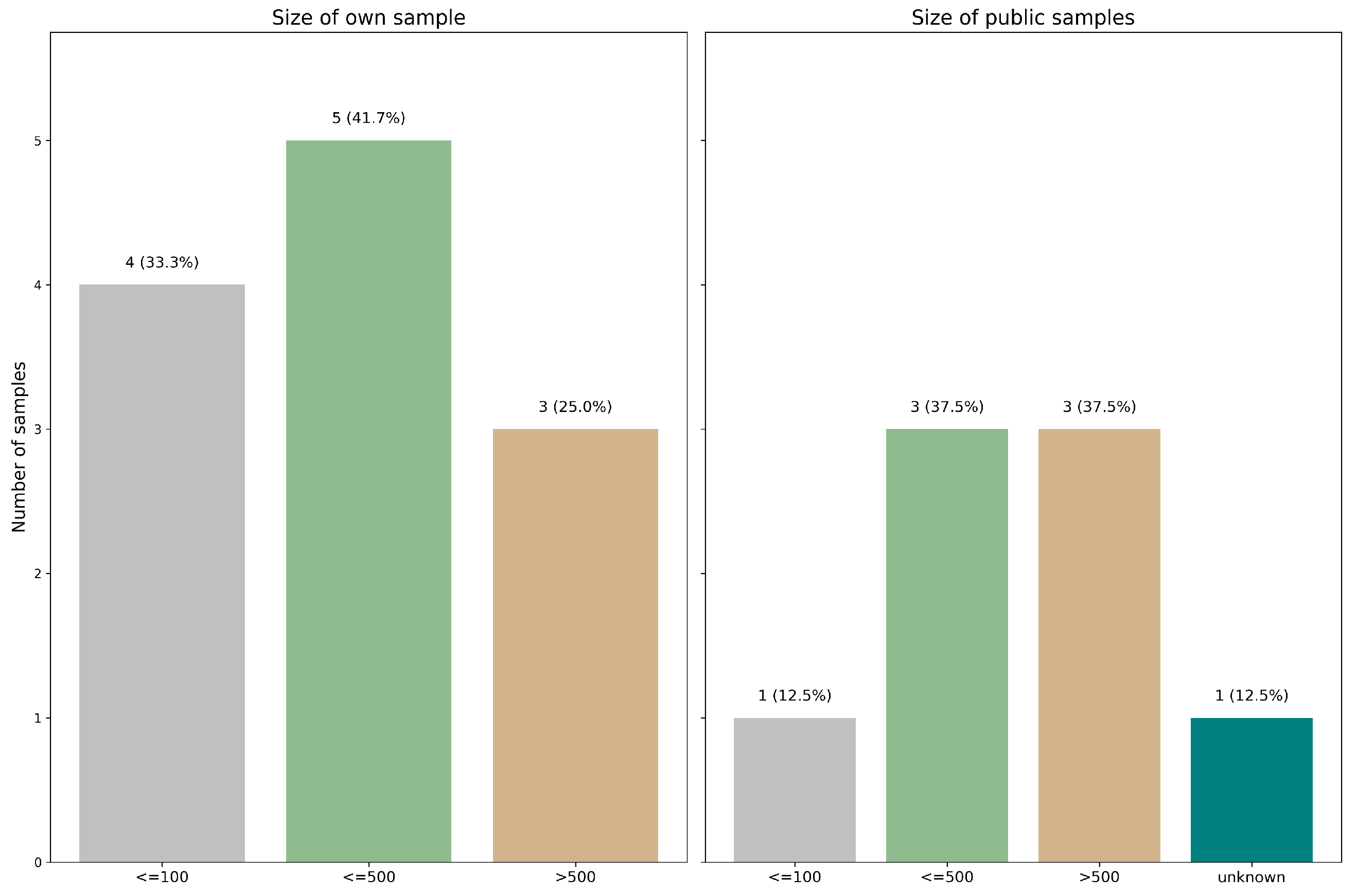
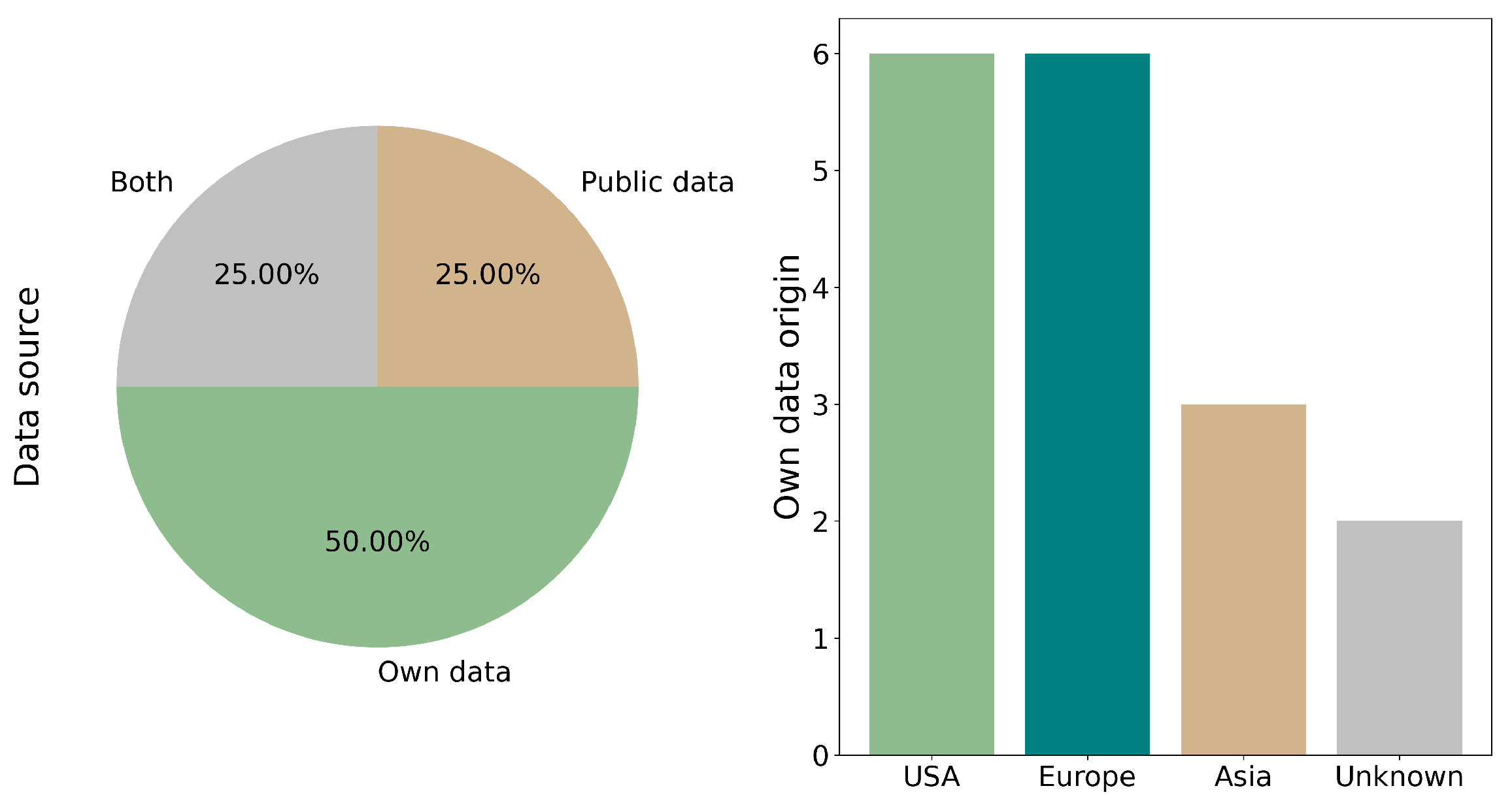


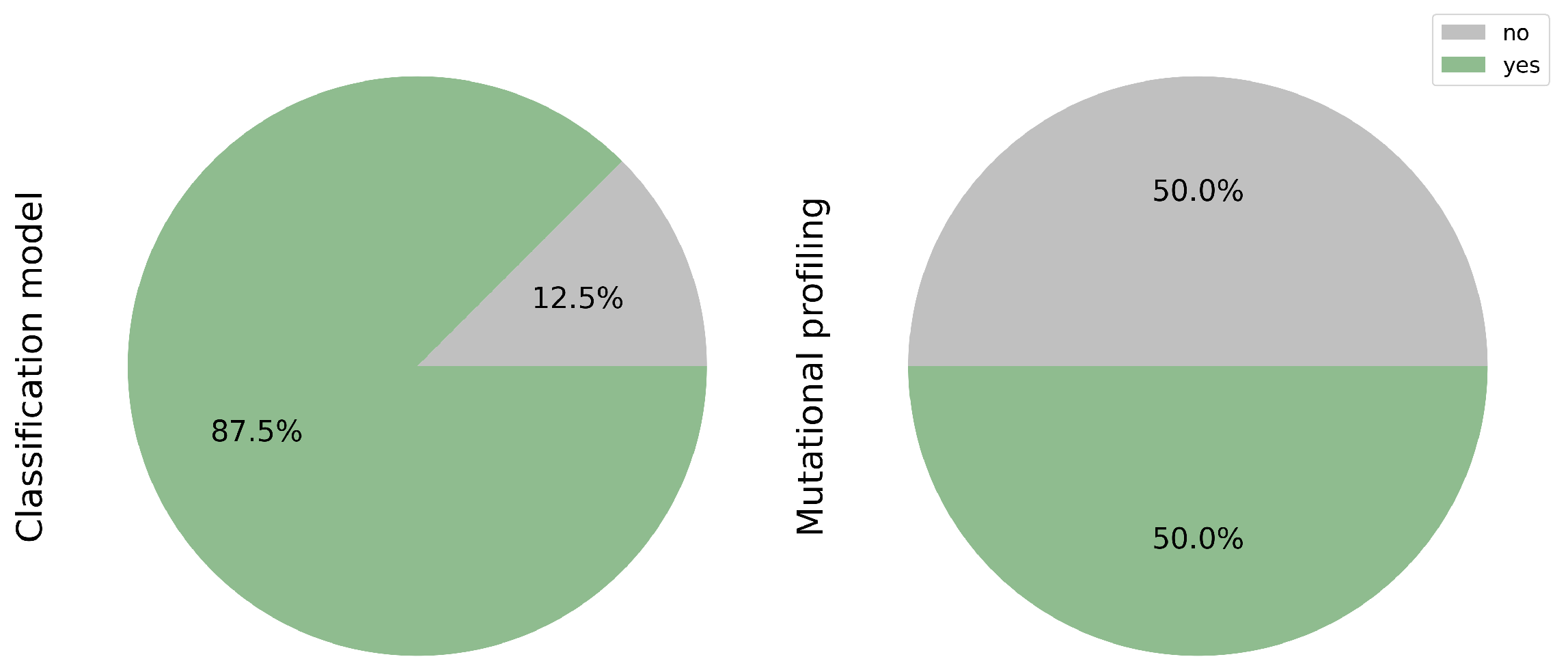
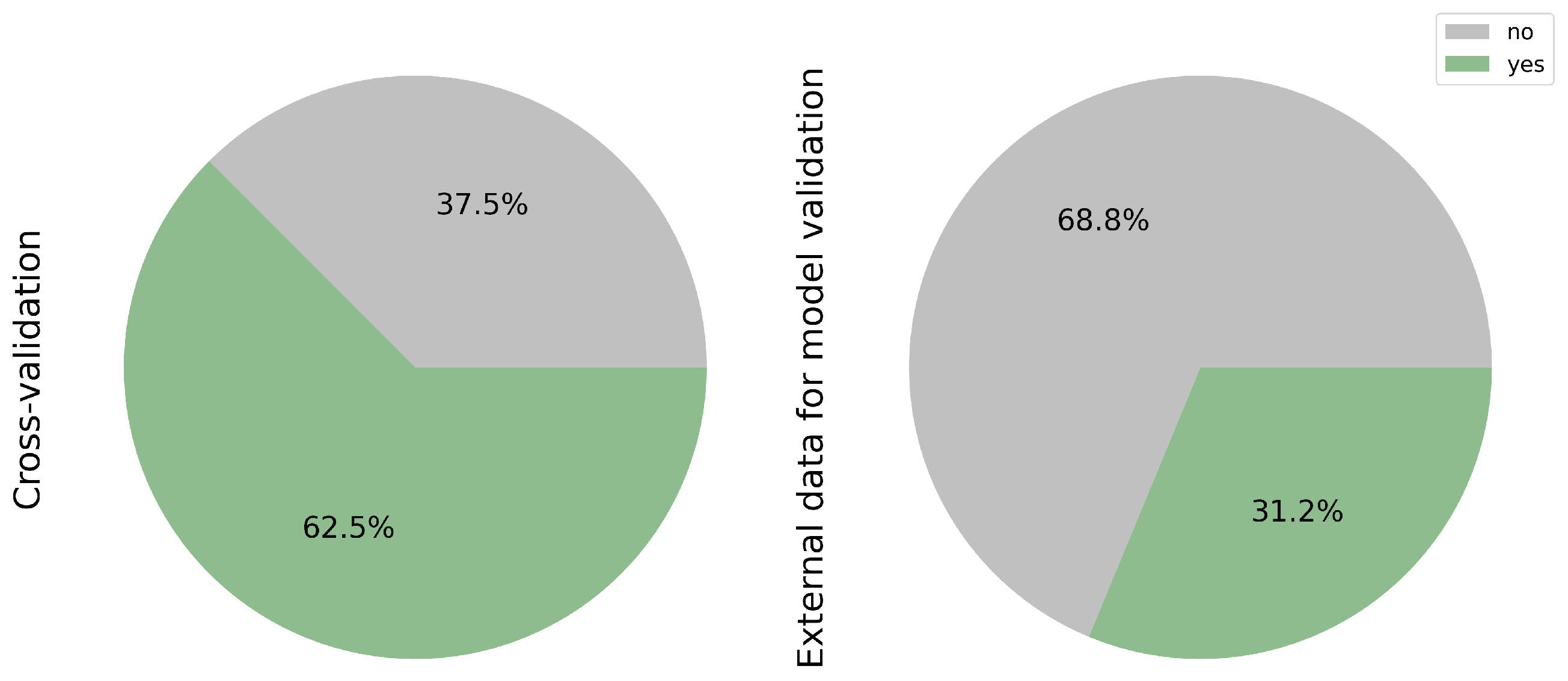

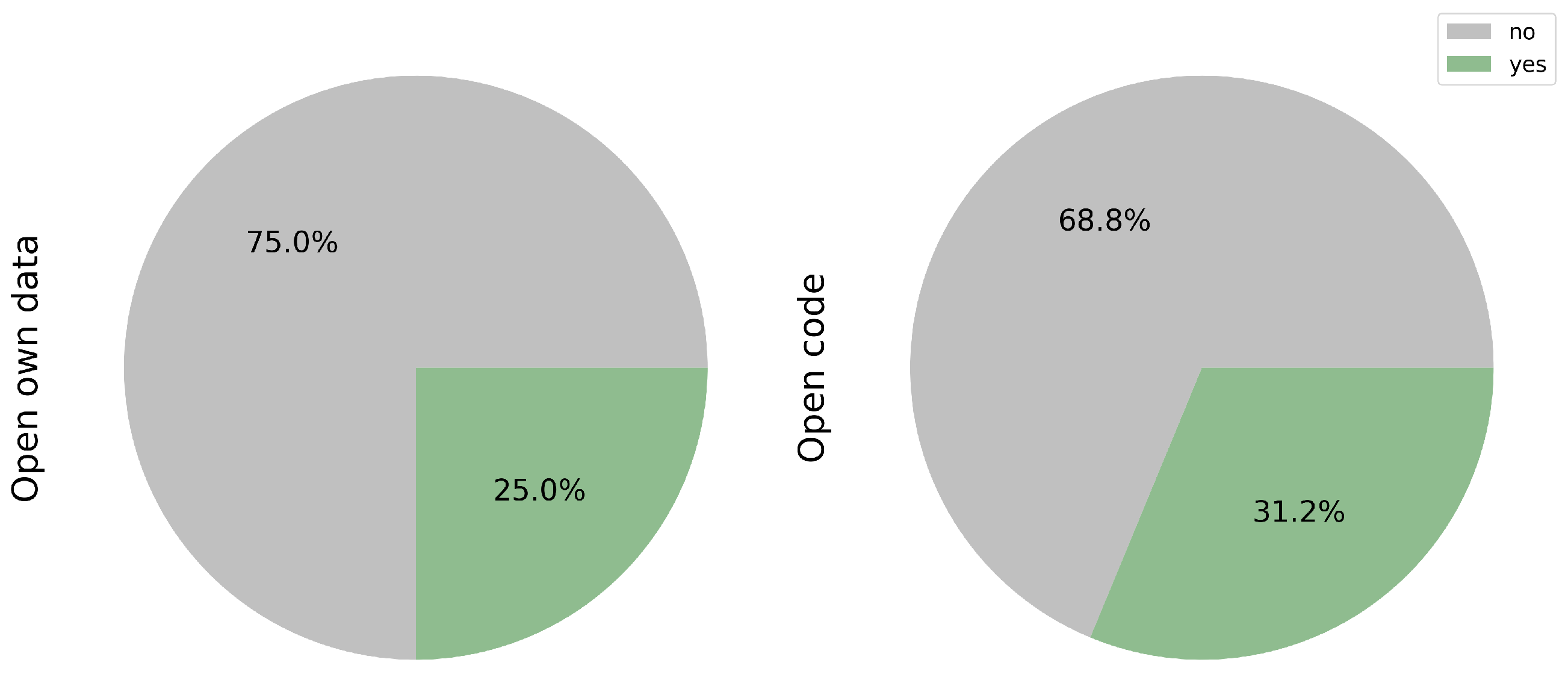
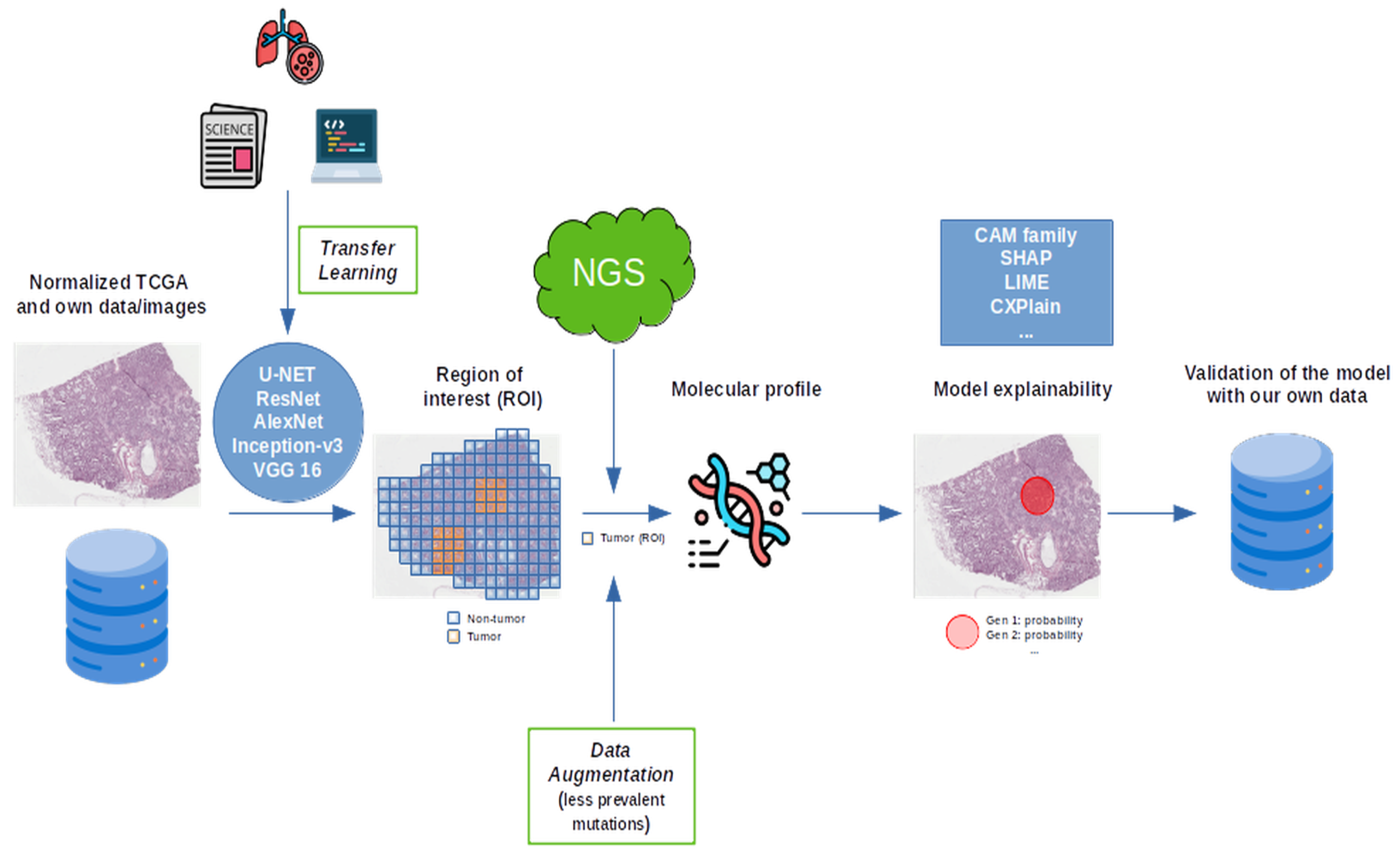
| Reference | Model Architecture | Classification Task |
|---|---|---|
| [2] | Probabilistic fusion (RNA-Seq + histology) | NSCLC subtype classification using multimodal data |
| [12] | ResNet50 (custom) | Slide-level classification of lung cancer |
| [21] | DeepLab v3+ | Tumor cellularity classification from IHC-restained slides |
| [32] | KPCA + CNN + DBNN | Classification of lung cancer from image features |
| [33] | Multiple CNN architectures (review) | Overview of detection/classification methods for lung cancer |
| [34] | ResNet, VGG, AlexNet (review) | Survey of deep learning techniques in lung cancer diagnosis |
| [35] | CNN (unspecified) | Prediction of cancer biomarkers from tissue slides |
| [36] | CNN (custom) | Prognosis and treatment response prediction in SCLC |
| Reference | Model Architecture | Mutational Task | AUC |
|---|---|---|---|
| [11] | CNN (unspecified) | Direct identification of ALK and ROS1 fusions from H&E | 1.000, 0.986 |
| [17] | CNN + attention | Segmentation of tumor microenvironment predictive of mutation and survival (RET *, KRAS *, KEAP1 *, TP53 *, BRAF, PDGFRB, ROS1 *, STK11 *, MET, ALK *, DDR2, PIK3CA *, and EGFR *) | 0.67, 0.62, 0.61, 0.59, 0.57, 0.74, 0.61, 0.63, 0.69, 0.63, 0.57, 0.58, 0.65 |
| [23] | DeepLab v3 | Prediction of EGFR mutation from H&E whole slide images | 0.833 |
| [25] | ResNet | Prediction of EGFR and TP53 mutations from WSI | 0.799, 0.713 |
| [26] | Custom CNN | Prediction of drug-targetable gene mutations (AKT, FGFR1, FGFR2, MET) and HRAS | 0.72, 0.83, 0.82, 0.86 and 0.79 |
| [27] | ResNet18 | Prediction of EGFR mutational status from pathology images | 0.870 |
Disclaimer/Publisher’s Note: The statements, opinions and data contained in all publications are solely those of the individual author(s) and contributor(s) and not of MDPI and/or the editor(s). MDPI and/or the editor(s) disclaim responsibility for any injury to people or property resulting from any ideas, methods, instructions or products referred to in the content. |
© 2025 by the authors. Licensee MDPI, Basel, Switzerland. This article is an open access article distributed under the terms and conditions of the Creative Commons Attribution (CC BY) license (https://creativecommons.org/licenses/by/4.0/).
Share and Cite
Ortuño-Miquel, S.; Roca, R.; Alenda, C.; Aranda, F.; Martínez-Banaclocha, N.; Amador, S.; Gil, D. Deep Learning Model-Based Architectures for Lung Tumor Mutation Profiling: A Systematic Review. Cancers 2025, 17, 3619. https://doi.org/10.3390/cancers17223619
Ortuño-Miquel S, Roca R, Alenda C, Aranda F, Martínez-Banaclocha N, Amador S, Gil D. Deep Learning Model-Based Architectures for Lung Tumor Mutation Profiling: A Systematic Review. Cancers. 2025; 17(22):3619. https://doi.org/10.3390/cancers17223619
Chicago/Turabian StyleOrtuño-Miquel, Samanta, Reyes Roca, Cristina Alenda, Francisco Aranda, Natividad Martínez-Banaclocha, Sandra Amador, and David Gil. 2025. "Deep Learning Model-Based Architectures for Lung Tumor Mutation Profiling: A Systematic Review" Cancers 17, no. 22: 3619. https://doi.org/10.3390/cancers17223619
APA StyleOrtuño-Miquel, S., Roca, R., Alenda, C., Aranda, F., Martínez-Banaclocha, N., Amador, S., & Gil, D. (2025). Deep Learning Model-Based Architectures for Lung Tumor Mutation Profiling: A Systematic Review. Cancers, 17(22), 3619. https://doi.org/10.3390/cancers17223619






